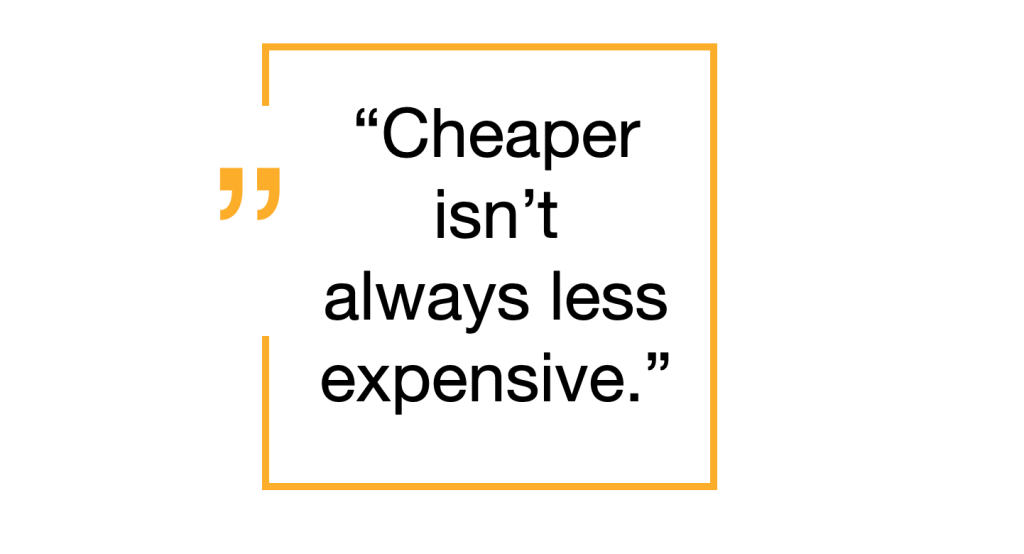Wholesale Pricing Secrets: How to Double Your Margins on Charging Accessories

Wholesale Pricing Secrets: How to Double Your Margins on Charging Accessories
Most wholesale buyers understand the basics of cost and markup — but very few truly master the art of margin stacking in the charging accessories space. Between volatile freight rates, inconsistent cable quality, and brand saturation on platforms like Amazon, it’s easy to assume there’s no room left for strong profit. Yet the wholesalers and route vendors quietly growing their margins year after year know something others don’t: small structural pricing advantages compound over time.
The Real Math Behind Wholesale Profitability
When you buy charging cables in bulk, the instinct is to negotiate for a lower per-unit price and then resell with a flat markup. But the best distributors look deeper. They treat margin as a dynamic equation — not just the gap between cost and sale price, but a system of efficiencies across packaging, shipping, and perceived value. It’s the same reason some gas stations earn twice the profit from accessories even when selling at the same retail price. Their advantage lies in sourcing from suppliers that design for presentation and reliability, not just volume.
That’s one reason packaging design plays a far greater role in wholesale pricing power than most assume. Attractive, retail-ready packaging shortens sell-through time, reduces damaged returns, and lets you command higher perceived value per peg. A small increase in average selling price — even 50 cents — can yield a meaningful difference when you multiply it across dozens of vending locations or c-store shelves.
Perceived Value vs. Real Value
The first pricing secret is understanding that “value” is not fixed. Wholesalers who treat charging cables as interchangeable commodities will always chase the lowest cost and the thinnest margins. But those who frame their products as dependable, branded accessories — rather than generic cords — can move from competing on price to competing on trust.
One example is BLOKK’s focus on materials. In its nylon cable manufacturing process, the reinforcement and copper composition are engineered to withstand thousands of bends. That level of durability translates directly into fewer returns and repeat purchases from satisfied buyers. When your product failure rate drops below one percent, your margins automatically widen because you’re not absorbing replacement losses.
Perceived value also comes from how customers interact with the product. According to TechCrunch, more than 70% of smartphone users purchase at least one replacement charging accessory annually, and the majority do so impulsively — in stores, airports, vending machines, or hotels. That behavioral pattern favors wholesalers who can provide fast-charging, visually premium products that stand out at a glance.
Packaging, Placement, and Presentation
Think of every cable you sell as a miniature billboard. Its job isn’t just to power a phone — it’s to signal trust in the thirty seconds before purchase. Hidden wholesale channels like auto shops, hospitals, gyms, and waiting areas thrive because they combine necessity with visibility. When your product is displayed well, you can achieve the same unit economics as a national retail chain without the same marketing overhead.
Wholesale buyers often underestimate how packaging thickness, hole-punch position, and color consistency influence restock time and shelf presentation. Route vendors, in particular, benefit from accessories designed to vend smoothly and hang cleanly — both of which reduce friction in replenishment cycles. BLOKK’s retail-ready approach was built for this exact reason: to make cables look “premium enough” to justify higher margins but simple enough for vending automation.
And that brings us to the next secret: convenience is currency. Businesses that make it easier for their downstream buyers to resell, display, and reorder will always command higher wholesale prices.
Bundling: The Silent Margin Multiplier
Bundles are among the most underused margin tools in the accessories industry. Instead of selling single-SKU cables, consider pairing them with wall chargers or multi-packs. The shift from USB-A to USB-C charging has already increased average wattage expectations, and customers are now looking for all-in-one solutions. When you package a 20W dual-port wall charger with a nylon cable, your cost per item increases slightly — but your perceived retail value doubles. That’s margin expansion without extra ad spend.
Retailers also gain efficiency through unified packaging and simplified ordering. When they see a combo pack labeled as “Essentials” or “Select,” they immediately understand the tier and pricing model. This clarity helps buyers reorder faster and encourages bulk purchasing behavior, improving velocity across wholesale accounts.
Volume Economics Done Right
Buying power matters, but only when structured properly. It’s not about chasing the lowest possible factory quote — it’s about designing a reorder rhythm that compounds returns. The most successful distributors structure their pricing in 25- or 50-unit increments that align with shipping weight tiers. That’s how they avoid the trap of freight eroding margin gains.
As illustrated in BLOKK’s route-vendor strategy, optimizing carton size to reduce dimensional weight charges can preserve 6–8% of margin before you even sell a unit. Multiply that across several routes, and you’re effectively paying yourself an efficiency dividend every month.
There’s also the psychological effect of larger order brackets. When you offer wholesale customers clear breakpoints — say, $2.80 per unit for 10 packs and $2.45 for 25 packs — you encourage consolidation, reduce transaction costs, and stabilize inventory forecasting. Over time, this predictability becomes part of your pricing advantage.
Where Most Wholesalers Leave Money on the Table
The charging accessory market is projected to exceed $150 billion globally by 2030, according to Statista. Yet most small distributors still operate with razor-thin profits. The reason is structural, not demand-related. They lack a framework for communicating value beyond “cheap and available.” The antidote is storytelling — the subtle cues that show buyers you understand their business model.
For example, a vending route vendor doesn’t just need a cable; they need something that won’t jam their coil system. A hotel manager doesn’t just want low price; they want an accessory that fits the aesthetic of the nightstand. BLOKK’s cruise and hospitality approach demonstrates how contextual use cases justify premium pricing. When your cable complements an environment — visually and functionally — the product transcends commodity status.
Another overlooked angle is distribution storytelling. In BLOKK’s article on rental car upsells, the emphasis isn’t on cost savings but customer experience. Rental agents increase revenue per transaction while travelers appreciate convenience. This same model applies across all wholesale channels: when you frame your accessories as part of a customer-centric solution, you unlock the ability to charge more without resistance.
Leveraging Hidden Channels for Margin Expansion
Margins grow fastest in markets that competitors overlook. Route jobbers and merchandisers know this firsthand: they operate in small-footprint locations that big brands rarely notice, yet the collective volume rivals regional retail chains. By supplying these micro-markets with branded, consistent accessories, wholesalers achieve a dual benefit — predictable reorder cycles and higher per-unit returns.
Research from Forbes suggests that convenience-based product categories outperform traditional retail by up to 30% when tied to recurring demand, like phone charging. It’s not just the product that drives margin — it’s the placement. When a customer’s phone battery hits 5%, price elasticity disappears. That’s why strategically located vending machines, lobbies, and waiting areas have become BLOKK’s most efficient distribution lanes.
Understanding Brand Premium in Wholesale Pricing
Wholesale success isn’t just about selling more — it’s about selling smarter. The wholesalers who thrive long-term invest in a brand premium: a small, defensible gap between their price and the generic market average. BLOKK built this advantage by designing packaging that feels “retail-ready” but pricing it for wholesale volume. This hybrid strategy was detailed in BLOKK’s homepage content, where the company outlines its vertically integrated model — from manufacturing and packaging to B2B fulfillment.
Brand premium manifests through repetition: consistent logo placement, color accuracy, and claims like “Strong. Fast. Reliable.” Buyers learn to associate those cues with reliability, even before verifying specs. Over time, wholesalers leveraging recognizable branding can sustain a 10–15% higher price point while maintaining identical sell-through rates. That’s the invisible engine behind double-margin performance.
Reducing Friction Across the Supply Chain
Margin leakage often happens in logistics. Domestic shipping fees, for instance, can quietly consume 8–10% of gross profit if not optimized. BLOKK mitigates this by structuring DDP shipping from its factories and consolidating outbound fulfillment domestically — a model that stabilizes landed costs. As a result, vendors can project their pricing three months in advance without fear of sudden freight spikes.
The company’s About page explains how this operational discipline enables consistency across the network of vending partners and wholesalers. Predictability is an underrated form of value: it allows you to quote confidently and maintain margin integrity over time.
From Commodities to Category Leaders
Every mature product category eventually splits into two camps: commodity suppliers and brand builders. Commodity suppliers compete only on cost. Brand builders, however, compete on identity and trust — and those two attributes support premium pricing indefinitely. BLOKK’s evolution through diverse wholesale channels shows that even in a crowded market, strategic positioning can turn basic utilities into high-margin mainstays.
The same principle applies across any distribution model. When wholesalers internalize the psychology of perceived value — and pair it with practical efficiencies like bundling, packaging design, and supply-chain discipline — they create pricing power that’s sustainable. It’s not a gimmick. It’s a compounding advantage built from operational precision and emotional intelligence.
Final Thoughts
The most successful charging-accessory wholesalers aren’t necessarily the biggest or the loudest — they’re the ones who see margin as a system, not a number. They understand that presentation drives perception, and perception drives price. By optimizing for quality, storytelling, and channel alignment, you can double your profit margin without cutting corners or chasing volume alone.
Wholesale pricing isn’t about luck. It’s about discipline, brand clarity, and the willingness to think beyond cost per unit. Every decision — from the thickness of your packaging card to the wattage of your wall adapter — contributes to that final number on your spreadsheet. When done right, the spreadsheet stops being a record of transactions and becomes a reflection of strategy.
Recent posts

Not long ago, hotels differentiated with plush bedding, craft toiletries, and fast Wi-Fi. Today, there’s...

In business, not all partnerships are created equal. A good wholesaler fills orders. A great...

In wholesale, every penny matters. Buyers compare quotes, chase discounts, and pride themselves on getting...

In a world obsessed with retail shelves and online clicks, most brands are missing the...
